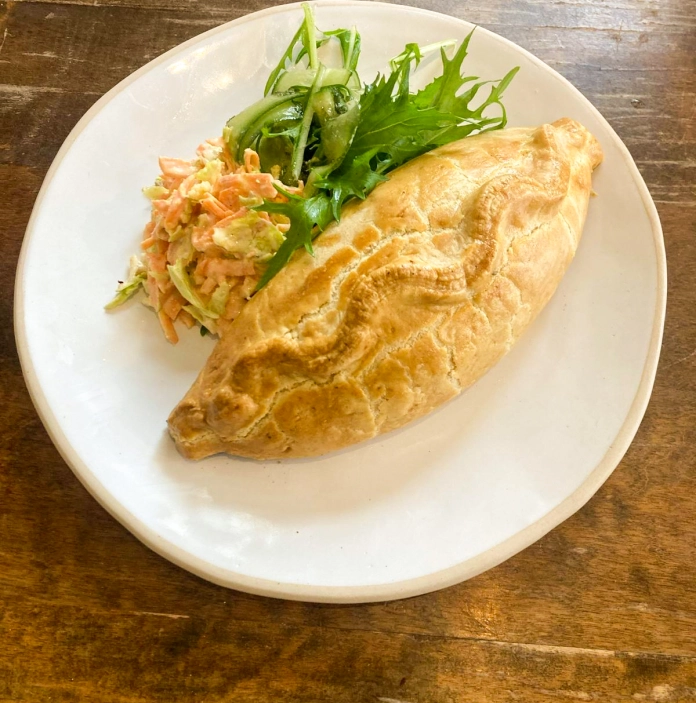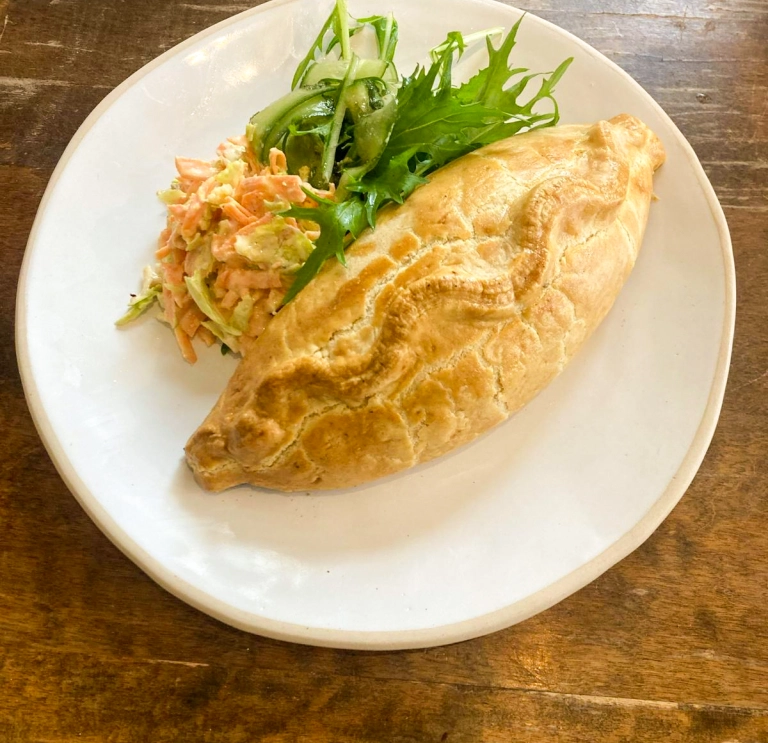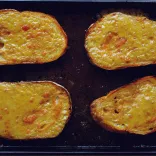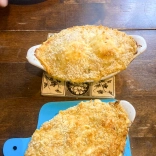Though synonymous with the English county of Cornwall (with which Wales shares a Celtic heritage), pasties have been eaten in Wales since at least the mid-18th century, with the early travel scribe Thomas Pennant documenting in his 1768 text, British Zoology, that the Welsh had a particular fondness for pasties filled with goat meat.
The modern ancestor to these primitive pasties is the Welsh oggie, a hard-crusted pastry that’s most typically filled with those quintessential Welsh ingredients of lamb and leek. Once a lunchtime stalwart for Welsh coal miners (thanks to the fact it requires no cutlery to eat), oggies are now sold in bakeries around the country – including the one on the top of Yr Wyddfa (Snowdon), Wales’ highest peak.
You’ll also hear the term oggie being thrown around at Welsh rugby matches, with the popular chant “oggie, oggie, oggie; oi, oi, oi” supposedly stemming from a playful coal mining custom that involved workers shouting “oggie!” when discarding the outer crust of their coal-smudged pastries, to which nearby colleagues would reply “oi!”
When is it eaten?
The pastry is popular as a lunchtime dish, and makes for an ideal, low-maintenance picnic when out walking in the beautiful Welsh countryside.
Notes from the chef
In this recipe, both the meat and the vegetables are being cooked from raw in the pastry itself, so opt for smaller chunks when preparing both. If using lamb shoulder or neck, cut thin strips (about 5mm thick) as they take longer to cook, so bigger pieces will remain tough. Also avoid putting holes in the top of the pasty, as this will help keep the moisture locked in and aid the cooking process.
This recipe requires a spot of pastry crimping. Crimping pastry is a bit of a knack, but there are lots of helpful videos with tips on the internet should you find yourself struggling.
Traditionally, laver sauce (consisting of a mixture of laverbread and Seville orange juice) has been served with mutton and lamb in coastal parts of Wales. As a nod to this, a delicious variation of an oggie can be made by adding 3 tbsp of laverbread and 1 tbsp of finely diced marmalade to the filling when mixing. The addition of laverbread when cooked with lamb that has grazed on the Welsh coastal marshes will accentuate the natural flavours of the meat even further.

How to make lamb oggies
Serves: 4 | Prep time: 1 hour (plus 30 minutes for chilling dough) | Cook time: 1 hour
Ingredients
For the pastry:
200g butter, chilled and diced
400g plain flour, plus extra for dusting
2 eggs
4 tbsp ice cold water
½ tsp salt
½ tsp sugar
For the filling:
300g boneless lamb or mutton (leg works well)
1 medium leek
1 small turnip, peeled
2 medium potatoes, peeled
1 tsp freshly ground black pepper
1 tsp salt
1 tsp chopped fresh rosemary
40g butter, melted and cooled
Method
Step 1: In a bowl, beat the two eggs with the iced water.
Step 2: Rub the butter (200g) and flour together with the salt and sugar, either using your hands or in a food processor. Once it resembles breadcrumbs, add half of the egg and ice water and mix until it just starts to come together to make a stiff dough. Do not over mix! Now split equally into 4 flat disks and chill for at least 30 mins.
Step 3: Preheat the oven (220C; fan 200C; gas 7), then cut all of the vegetables and lamb into 1cm cubes. Once diced, mix together with the salt, pepper, rosemary and the melted butter (40g).
Step 4: Lightly flour a surface and, working with one oggie at a time, roll one of the four disks to the thickness of a one pound coin (approximately 3mm). Using a plate as a guide, cut a circle around 20cm wide.
Step 5: Firmly pack a quarter of the filling onto one side of the pastry disk leaving a 1cm border around the edge. Brush the border with a little of the remaining egg and ice water mix and fold over to close the lid of the pastry ensuring both edges meet. Press firmly together and then crimp the edges together working around with your thumb and forefinger. Repeat with the remaining pasty disks.
Step 6: Place the four filled pasties onto a large baking tray lined with baking parchment and brush with the last of the egg mix. Bake for 10 minutes before turning the oven down (to 180C; fan 160C; gas 4) and cooking for another 45 minutes. Allow to cool on a cooling rack or, better still, eat them straight from the oven with some fresh mint sauce as a dip.
This recipe was researched and tested by chef Alex Vines. Alex developed his signature “simple yet attentive” cooking style during a decade working in renowned London restaurants. Originally from Cardiff, Alex champions the use of seasonal and local produce, mirroring the principles of traditional Welsh recipes. Follow Alex on Instagram.



